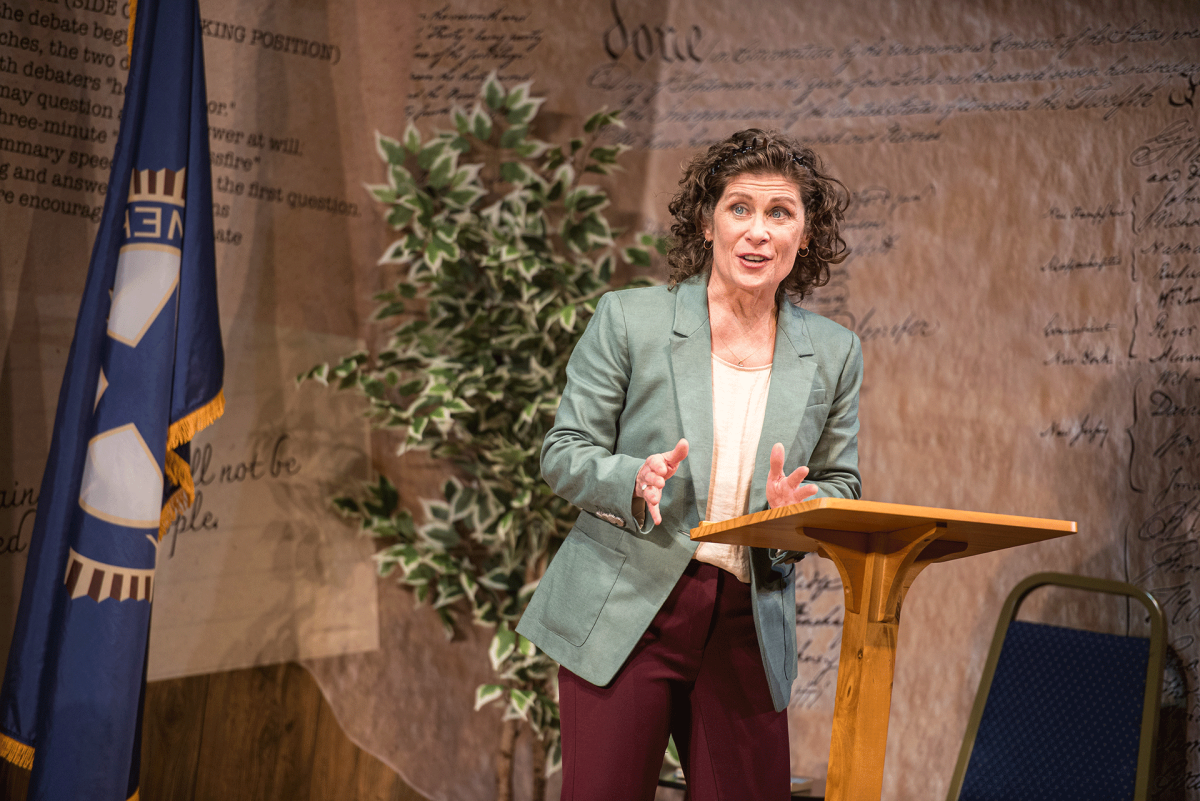
Imagine a mysterious disease striking mass amounts of people in the community without warning. There is no knowledge of how it is spreading or who it will hit next. Imagine the chaos, the confusion, the unavoidable sense of loss and helplessness.
This is where you’d find yourself in the plot of “The Normal Heart,” a play written by Larry Kramer, directed by Steve Noll and performed by Stage Q at the Bartell Theatre. Stage Q’s performance effectively captures the piece’s heart-wrenching mood through acting, historical sound clips and the writing covering the walls of the small, intimate theatre.
“The Normal Heart,” set in 1981 New York, follows the gay activist Ned Weeks through the early years of the AIDS epidemic. All of the characters have a sense of fear instilled by the unknown nature of a disease hitting the gay community. Along with fear, a sense of helplessness and loss prevails as more and more of the community becomes infected, and the infected rapidly begin to pass away. Faced with isolation and stigmatization from the rest of the city, fear and judgment prevent any action from the government and media to put a stop to the new highly-infectious and deadly disease.
The actors’ depictions of the various characters not only capture the emotional volatility of the times, but also debunks many gay stereotypes. Each of the characters on stage portrays a distinct identity, ranging from the closeted to the flamboyant. But at one point or another, each character experiences some sort of emotional swell or breakdown from the pressure of fear. The sudden surge of emotion from each character in turn tugs at the heartstrings of the audience, garnering sympathy for the chaotic historical period. In particular, the outburst from Nick Kaprelian playing Mickey captured the hearts of the audience. The seemingly happy and carefree Mickey finally breaks as he condemns those within the community who speak out against the prevalent “free love” way of life. The sobbing, hysterical speech emphasizes not only the criticism from outside the community, but also within. His breakdown leaves the crowd rooting for their small activist group to unite, despite their obvious differences.
The audience’s emotional involvement never gets a break, not even between scenes. As the small company performs scene switches, live recordings from the era pierce darkness of the theater. The recordings include the Center for Disease Control’s announcement recognizing HIV/AIDS as an epidemic, to a nameless crowd cheering for the New York mayor who left a large community within his city without hope by stigmatizing HIV/AIDS. The clips relate to the preceding and following scenes and bring a greater amount of reality to the performance at hand. Setting the work of fiction alongside historical sound clips drives home the real-life suffering that the gay community went through during the 1980s.
If the real-life sound clips and emotionally-committed actors aren’t enough to break an audience’s heart, the actual death toll, counted between scenes, is. Between scenes a dim spotlight focuses on a large heart drawn on the back wall. Across the top is written “Number of Cases,” while a list of names adorns the center, along with the number of deaths. Between each scene the previous number of cases and number of deaths is crossed off, and a higher number inevitably appears below.
The audience is able to see the actual death totals in real time with the timeline of the play. It is truly heartbreaking to see the total approach such heights before any real action is taken. The stoic nature of the two actors who write the numbers brings the idea of death to mind even more firmly. They are expressionless, silent, relentless.
At the d?noument, the two main actors take turns mechanically crossing off the names on the list. No tears are shed. No emotion is shown. Yet before the final scene, a final count is written with the words “and counting…,” suggesting the ongoing nature of the disease. There is no sense of resolution or finality, and the audience is left to contemplate the endless devastation.
Emotions run high during “The Normal Heart,” from the opening line to the final fading spot light. Walking back out into Madison’s afternoon sunshine, it’s hard to shake the dwindling feelings of guilt and sympathy as the message of “The Normal Heart” persists in the hearts of its audience members.






















